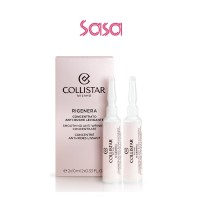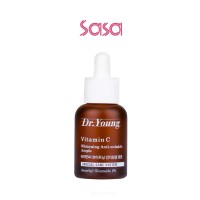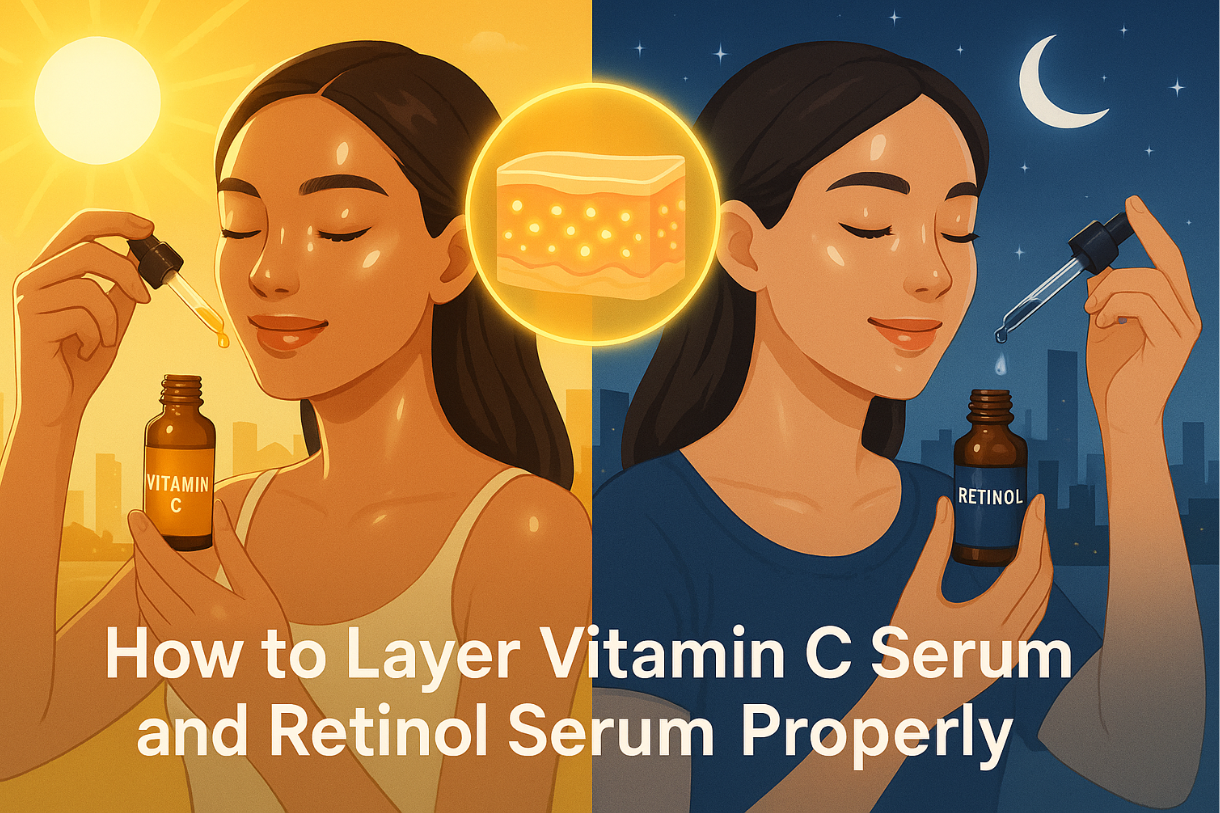
Dreaming of glowing, healthy skin? You’re not alone. Vitamin C serum and retinol deliver excellent skincare results, but improper use can lead to negative effects. Proper skin care depends on correct timing, layering beauty products effectively, and knowing what your skin requires. The key principle here is simple science, which results in effective skincare rather than complex routines.
Vitamin C helps to neutralize free radicals and lighten dark spots, while retinol reduces fine lines and promotes faster cell regeneration. Used wrong, they cancel each other out. Used right? They’re unstoppable. In this guide, we demonstrate the proper application of vitamin C serum during your morning routine, followed by retinol at night to achieve maximum skincare benefits. The beauty guide provides straightforward instructions that everyone can understand without any complex terms or unnecessary details.
Ready to transform your skincare routine? Let’s dive in.
The combination of vitamin C and retinol serums delivers a powerful transformation for your skin
Vitamin C serum and retinol work as complementary skincare elements like sunshine and moonlight because each performs best at different times, but together they offer a harmonious balance. We are going to explore why these two products together deliver such great results.
Benefits of Vitamin C: Your Daytime Shield
Singapore's urban pollution and UV rays generate free radicals that need neutralizing through essential Vitamin C. Vitamin C helps to lighten dark areas while creating a smoother texture and tone across the skin and increases collagen production for finer lines.
Incorporating vitamin C into your morning skincare routine forms a protective shield against sun damage. Choose L-ascorbic acid or ferulic acid formulas because they deliver powerful results with suitable gentleness for sensitive skin.
Benefits of Retinol: Your Overnight Renewal Crew
Retinol functions as a derivative of vitamin A, which accelerates the process of cell renewal. Retinol acts on your skin's layers to decrease acne presence while smoothing wrinkles and lightening hyperpigmentation.
Retinol usage should be limited to nighttime since it increases your skin's sensitivity to the sun. After cleansing, apply your retinol to dry skin because this method promotes collagen production without irritating it.
Why Timing Matters
Daily application of both vitamin C and retinol allows users to experience the combined advantages of both substances. Direct combination of retinol with vitamin C nullifies their effectiveness. The acidic nature of vitamin C interferes with the molecular structure of retinol.
Experts frequently recommend using vitamin C and retinol at separate times to maximize their benefits. Apply vitamin C with SPF during daytime hours and use retinol with moisturizer in the evening. This way, you protect your skin 24/7.
Learn the correct way to combine vitamin C and retinol without damaging your skin
Incorrect application of these potent ingredients leads to skin redness and stinging sensations while wasting your skincare efforts. Follow this scientifically validated approach to safely combine vitamin C and retinol.
The pH Problem: Why Order Matters
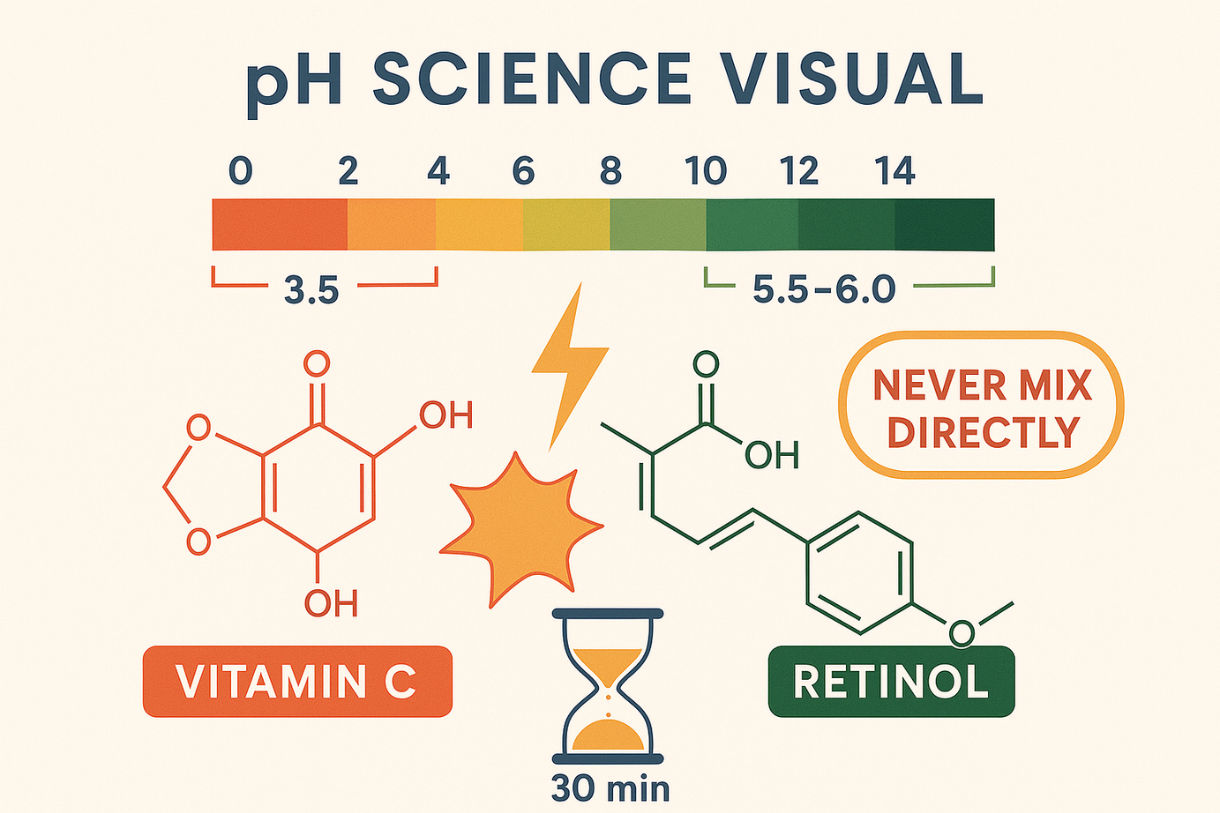
Manufacturers formulate vitamin C serums with a low pH level of 3.5 to ensure stability and deep skin penetration. Retinol functions optimally when applied at a pH level between 5.0 and 6.0. Applying them together neutralizes both. Your skin feels raw because the different pH levels of these products create irritation when they mix. First, apply vitamin C serum to clean skin, then wait 30 minutes before using retinol.
The Waiting Game: Patience Pays Off
The full absorption of vitamin C requires time because rushing through application leads to pilling and ineffective results. After cleansing:
- Pat face dry
- Apply vitamin C serum (3–5 drops)
- Set a timer for 30 minutes (drink coffee, brush teeth!)
- Follow with retinol (pea-sized amount)
This gap lets your skin cells absorb each serum properly.
Mistakes to Avoid
| Mistake | Result | Fix |
| Mixing serums in a palm | Irritation + weak results | Apply separately |
| Skipping wait time | Wasted products | Always wait 20–30 minutes |
| Forgetting SPF | Sun damage + dark spots | Sunscreen every AM |
Your Singapore-Friendly AM/PM Routine
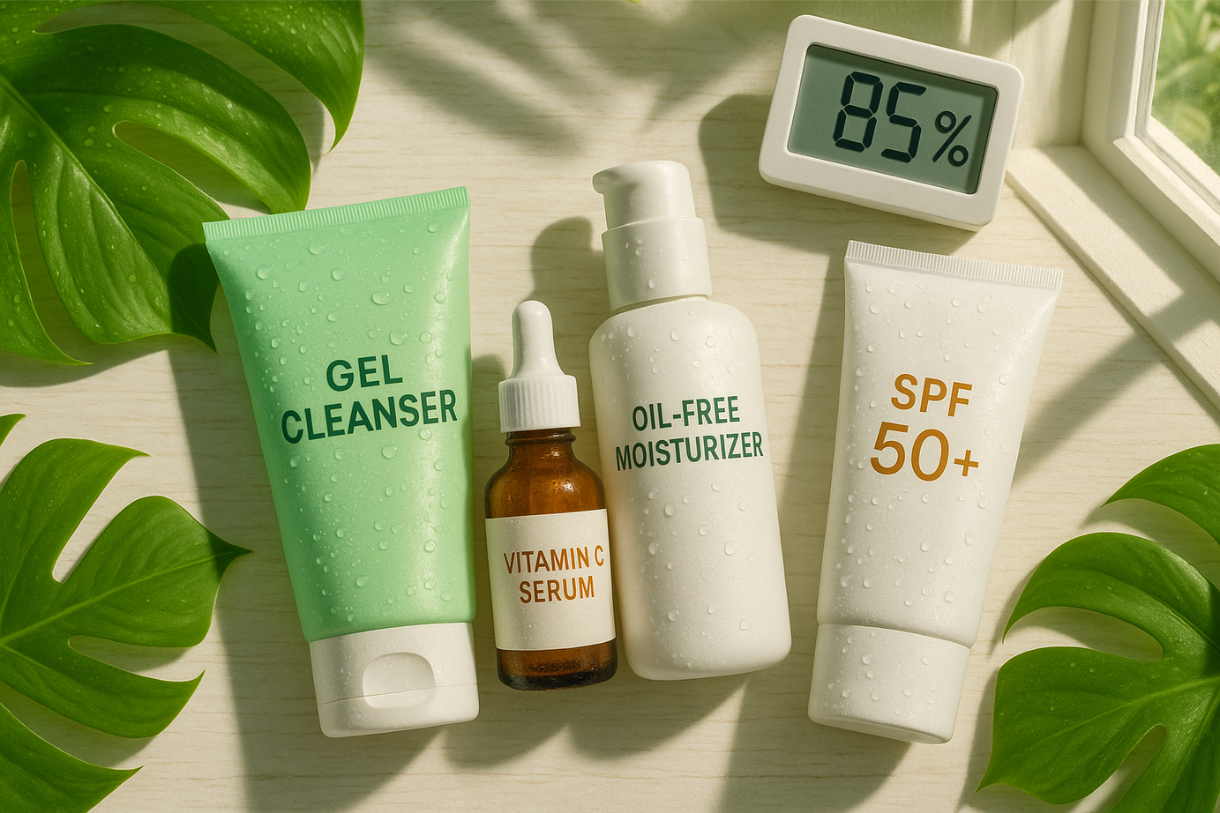
Singapore’s humidity changes everything. Adapt your skincare routine with these tweaks:
Morning: Vitamin C + Defense Mode
- Cleanser: Gel-based, low-pH (removes sweat/oil)
- Vitamin C serum: Lightweight L-ascorbic acid (fights humidity-induced free radicals)
- Hyaluronic acid serum: Locks in moisture without grease
- Moisturizer: Oil-free gel
- Sunscreen: SPF 50+ (reapply if outdoors!).
Vitamin C in the morning shields against pollution and UV.
Night: Retinol + Repair Mode
- Double cleanse: Oil cleanser first, then foam.
- Retinol: Start 0.2% if new to using retinol
- Barrier cream: With ceramides (combats humidity-triggered acne)
Retinol at night renews skin while you sleep.
Troubleshooting for Sensitive Skin
Using retinol and vitamin C can sometimes lead to redness or stinging. Here’s how to adapt the routine for sensitive skin without sacrificing results.
Gentle Integration Techniques
Start with low concentrations: 5-10% vitamin C serum (like L-ascorbic acid paired with ferulic acid) and 0.2% retinol. Apply every third night initially, then slowly increase. Apply vitamin C serum in your morning routine as usual, but follow with extra hydration like a hyaluronic acid serum. This buffers potential irritation while fighting free radicals.
For retinol at night, try the "sandwich method":
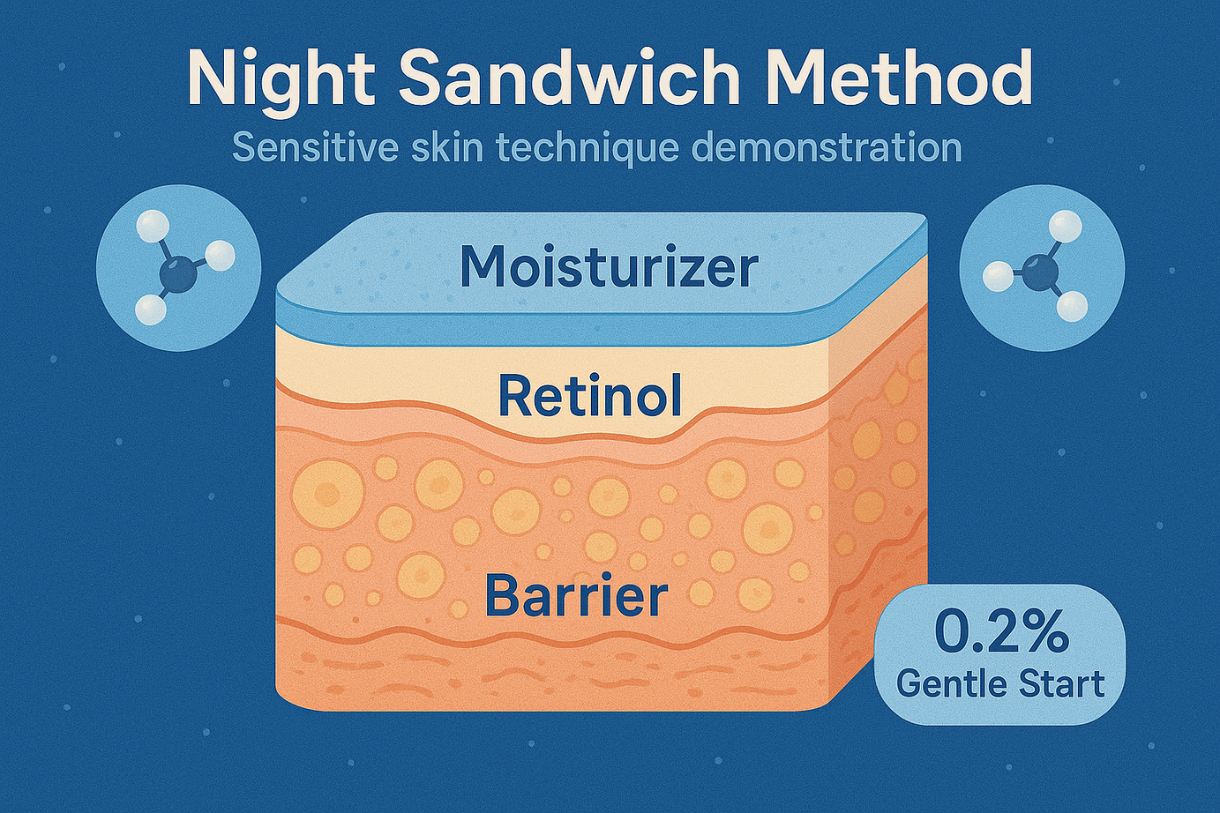
- Moisturizer
- Pea-sized retinol
- Barrier-repair cream
This protects your layer of the skin while boosting cell turnover.
When to Pause and Reset
If peeling or burning occurs:
- Stop using retinol for 3 days
- Focus on SPF and hydration
- Reintroduce vitamin C first, then retinol
This combination of skincare products remains suitable for people who experience skin sensitivity.
Monsoon-Ready Adjustments for Singapore
Humidity amplifies how skincare ingredients behave. These science-backed tweaks can help you adjust your skincare routine for rainy weather.
Humidity-Proof Layering
Choose water-light formulas in place of creamy ones to maintain clear pores. When using vitamin C serum, apply it as a thin film because gel-based versions, including Vichy LiftActiv, will absorb immediately.
Retinol serums are preferable to creams for nighttime application to avoid irritation from sweating. Leave 30 minutes between applying different serums since high humidity levels delay product absorption.
Monsoon-Specific Swaps
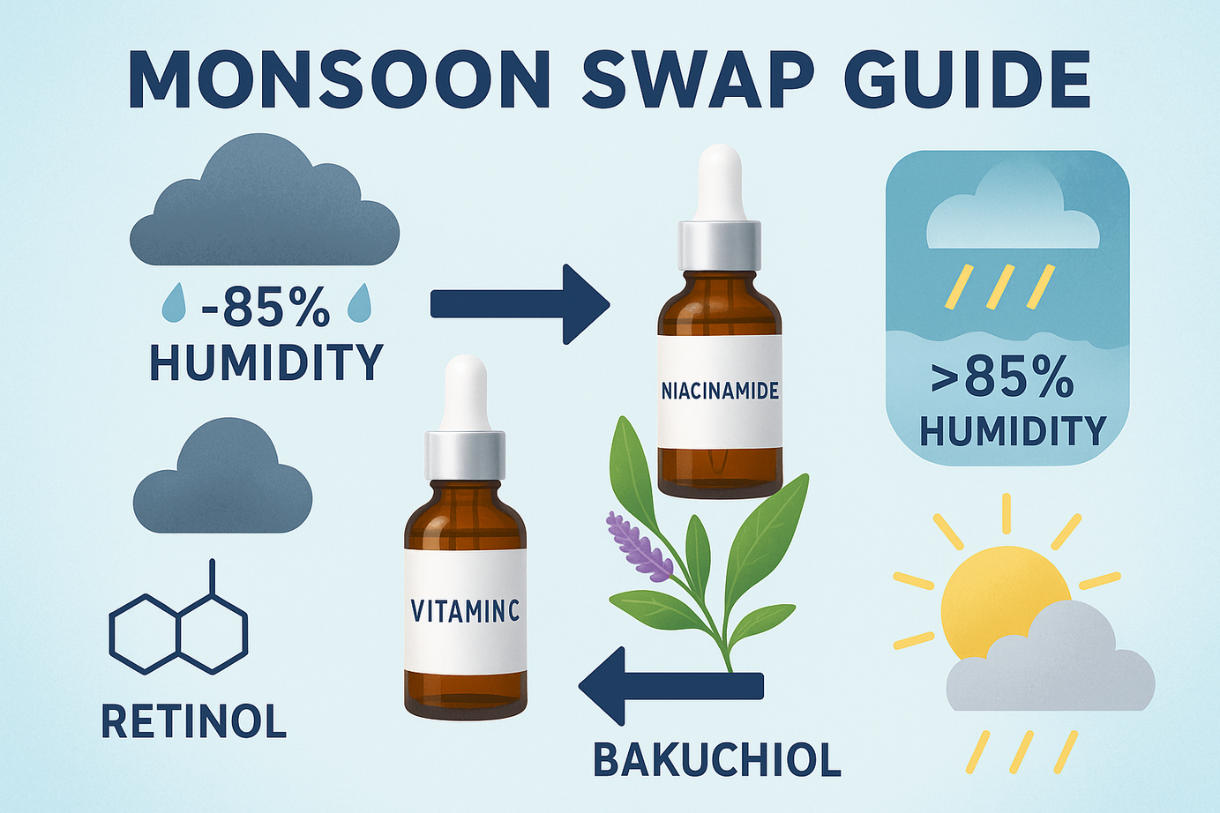
When humidity exceeds 85%:
- When humidity levels rise above 85%, use antioxidant-rich niacinamide to combat acne without leaving a sticky residue in place of vitamin C.
- Choose bakuchiol instead of retinol because it provides a gentler option that enhances collagen production.
- Never skip sunscreen—UV penetrates clouds!
Pro Tip: Keep vitamin C products refrigerated to stop oxidation.
Selecting Suitable Vitamin C and Retinol Products
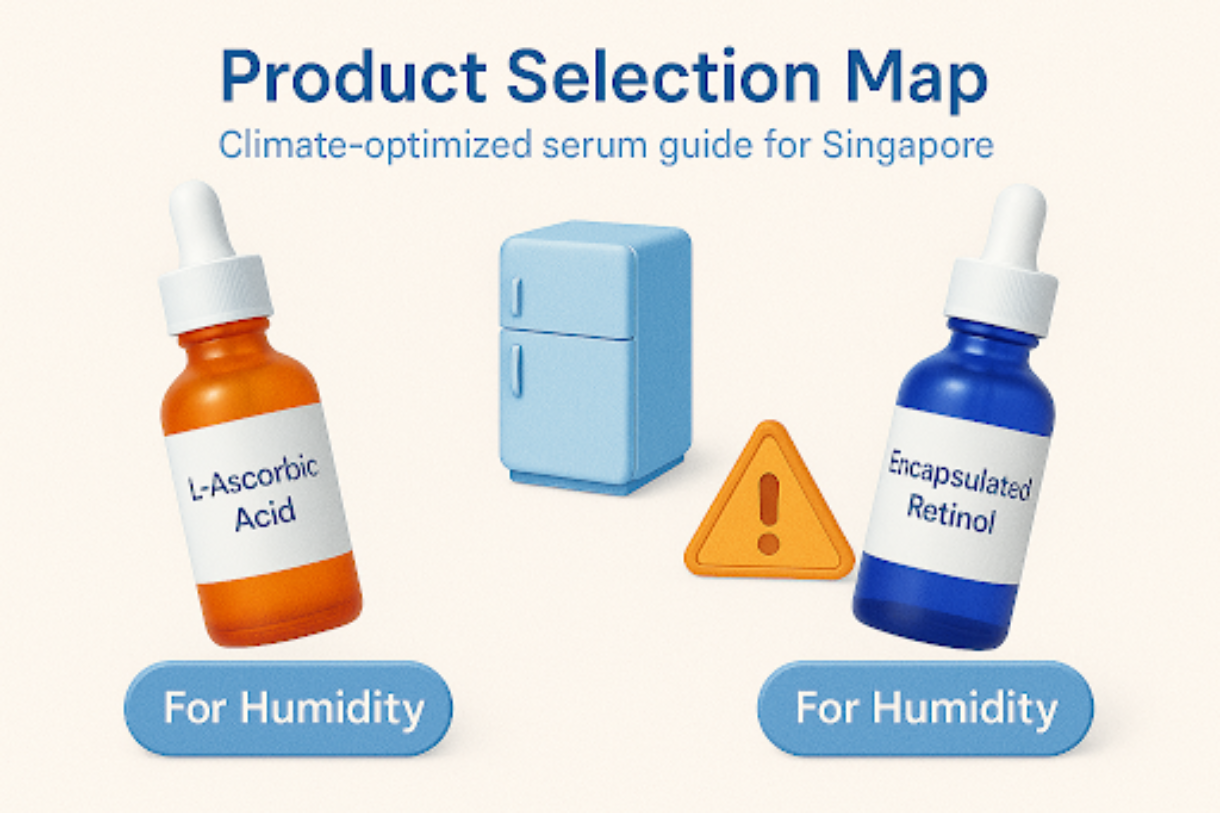
Different vitamin C serums offer various results, while retinol products demonstrate broad variations. Learn to choose effective skincare products for Singapore’s tropical weather.
Decoding Vitamin C Labels
Choose L-ascorbic acid (10-20%) formulations that contain ferulic acid for enhanced protection from humidity. Avoid dark or cloudy bottles—oxidation kills potency. Water-based, lightweight Vitamin C serums provide the best performance because they absorb quickly and leave no sticky residue. Individuals with sensitive skin experience less irritation from magnesium ascorbyl phosphate when it helps combat hyperpigmentation.
Retinol Selection Guide
- Beginners: Start with 0.2% encapsulated retinol (time-released)
- Oily/Acne-prone: Retinol with salicylic acid (unclogs pores)
- Mature skin: 0.5% retinol + peptides (boosts collagen production)
- Crucial: Retinol products containing vitamin E should be avoided when humidity levels are high because they trap heat.
How Long Until You See Results?
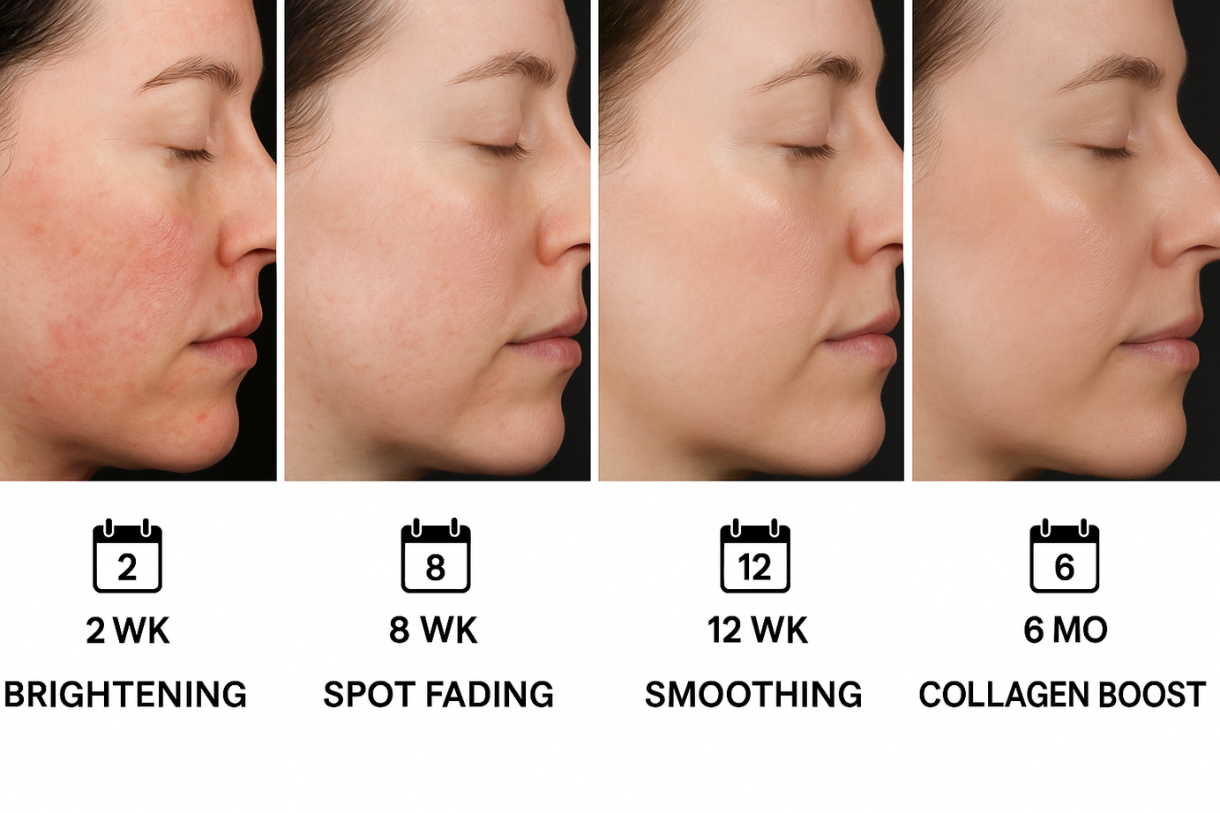
Patience beats panic!
Here’s what to expect:
| Timeline | Vitamin C Effects | Retinol Effects |
| 2-4 weeks | Brighter skin, reduced dark spots | Smoother texture, less acne |
| 8-12 weeks | Faded hyperpigmentation, firmer feel | Visible reduction in fine lines |
| 6 months | 40% fewer free radicals are damaged | Thicker skin cells, 30% collagen boost |
Pro Tip: Take weekly selfies in consistent lighting to track progress.
Sa Sa Product Picks:
- DR.YOUNG Vitamin C Whitening Anti-wrinkle Ample Serum delivers brightening effects with antioxidant protection.
- COLLISTAR Smoothing Anti-wrinkle Concentrate Retinol Oil stays non-comedogenic during tropical weather.
Conclusion: Unlock Radiant Skin with Smart Layering
Retinol combined with vitamin C creates a powerful skincare routine that effectively treats fine lines and wrinkles while addressing discoloration and environmental damage. You can maximize the effectiveness of vitamin C during your morning skincare routine and retinol at night to utilize their unique benefits without reducing results.
L-ascorbic acid in a ferulic serum form of vitamin C helps to improve both the skin tone and texture while you wear it throughout the day. Retinol serves as an essential vitamin A derivative that facilitates skin renewal in nighttime applications. Everything you need to know:
- Best used in the morning: Vitamin C shields skin and boosts collagen.
- Retinol at night: Retinol used at night helps to prevent sun sensitivity but also enhances skin texture.
Never mix them—their pH clash means that retinol and vitamin C cannot be used simultaneously.
Give your skin 24/7 defense with curated retinol and vitamin C products at Sa Sa Singapore. Your journey to resilient, luminous skin starts now!
FAQ: Layering Retinol & Vitamin C
- Can I use retinol and vitamin C together?
No—these ingredients together neutralize each other’s pH. Vitamin C is best used in the morning; retinol at night is ideal. - Why add vitamin C to your skincare routine?
Vitamin C also fights discoloration and free radicals. As Dr. Lisa Chang, Assistant Clinical Professor of Dermatology, notes, "It’s essential for daytime protection against environmental damage." - How should retinol users incorporate vitamin C?
Apply vitamin C in your skincare routine in the AM and retinol at night. Wait 30 minutes between layers—this ensures both work effectively. - Are there safe ways to use retinol and vitamin C?
Yes! Use them at different times of the day. Vitamin C and retinol are both powerful, but used together improperly, they irritate. - What’s the key to improving skin texture?
Consistency! Retinol also boosts collagen over time. Be sure to use SPF 50+ daily—this protects results from both ingredients.
Author
Mei Ling Cheng is a seasoned beauty expert with over 15 years of experience in makeup artistry and skincare consulting. As a leading beauty advisor at Sa Sa Malaysia, she helps customers achieve flawless, long-lasting looks.
Featured Products in this Post
Related Posts
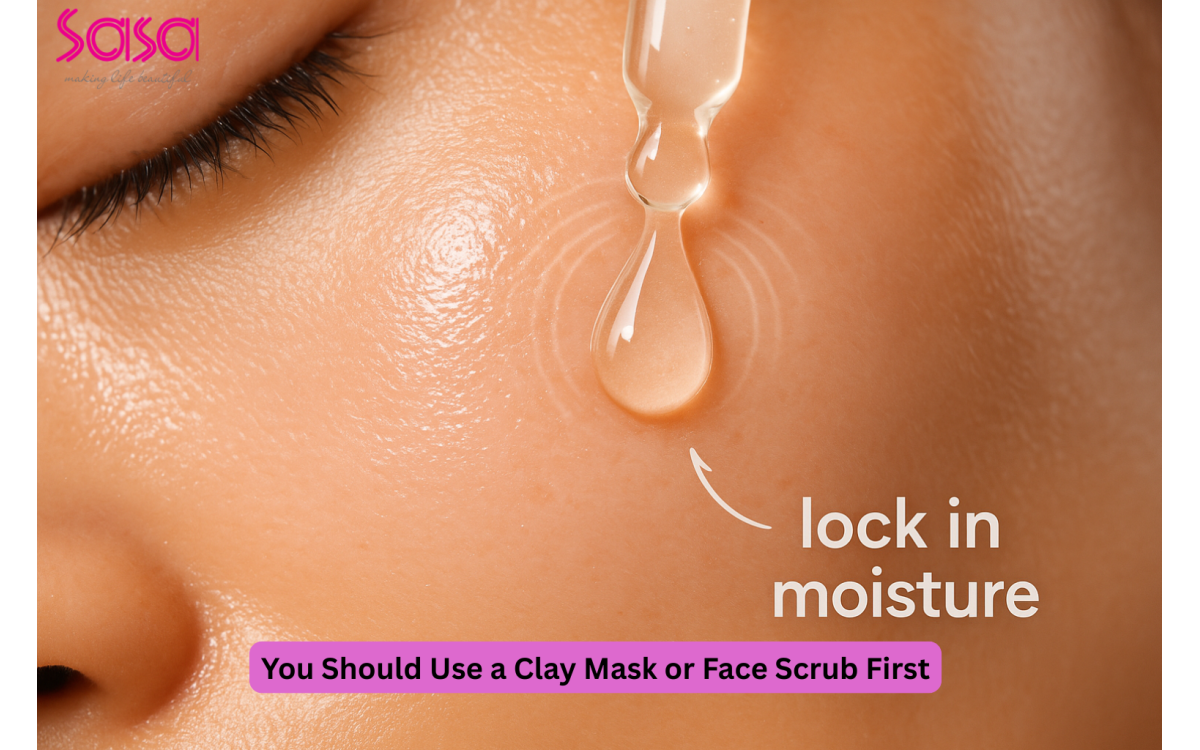
Should You Use a Clay Mask or Face Scrub First? The Correct Order for Your Skin Type
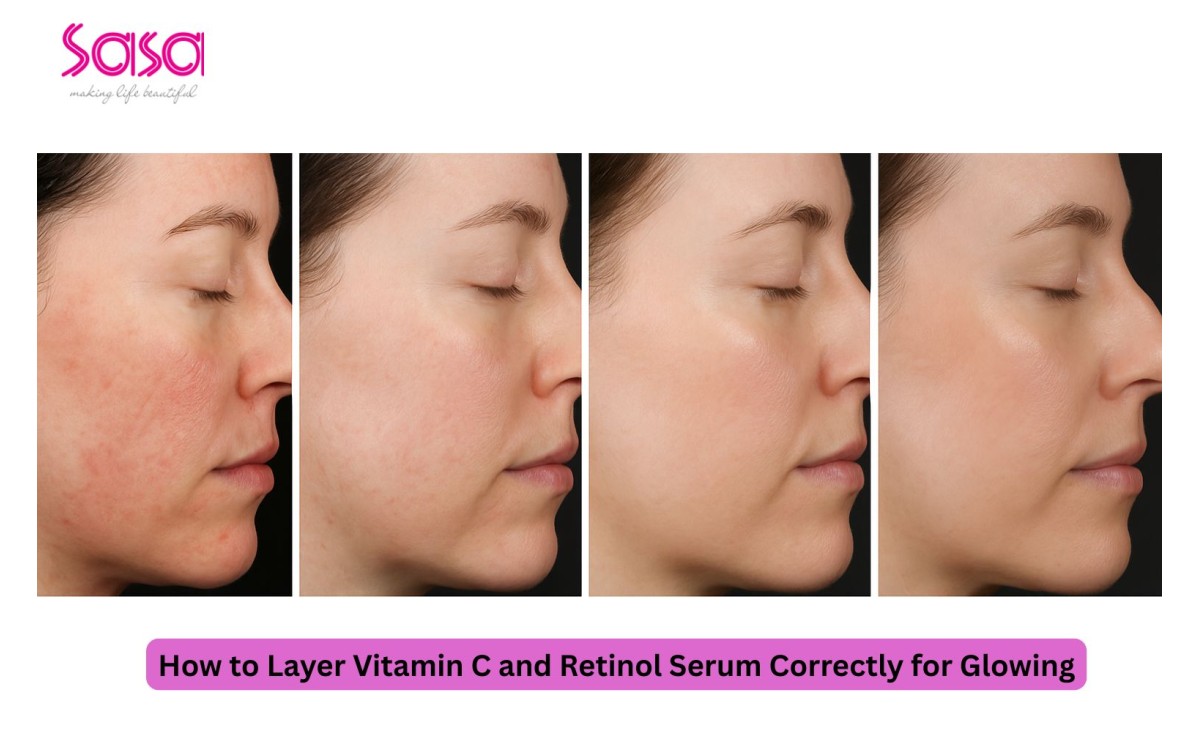
How to Layer Vitamin C and Retinol Serum Correctly for Glowing
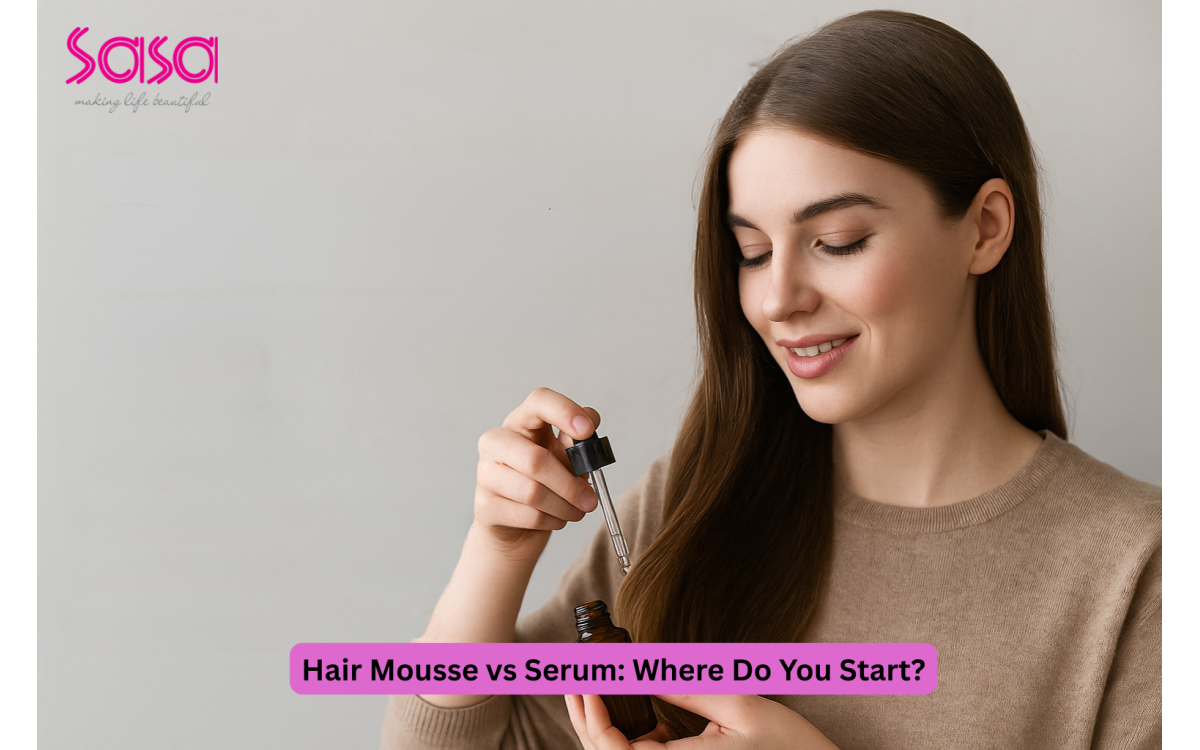
Hair Serum or Hair Mousse: Best Hair Styling for Thin, Dry Hair?
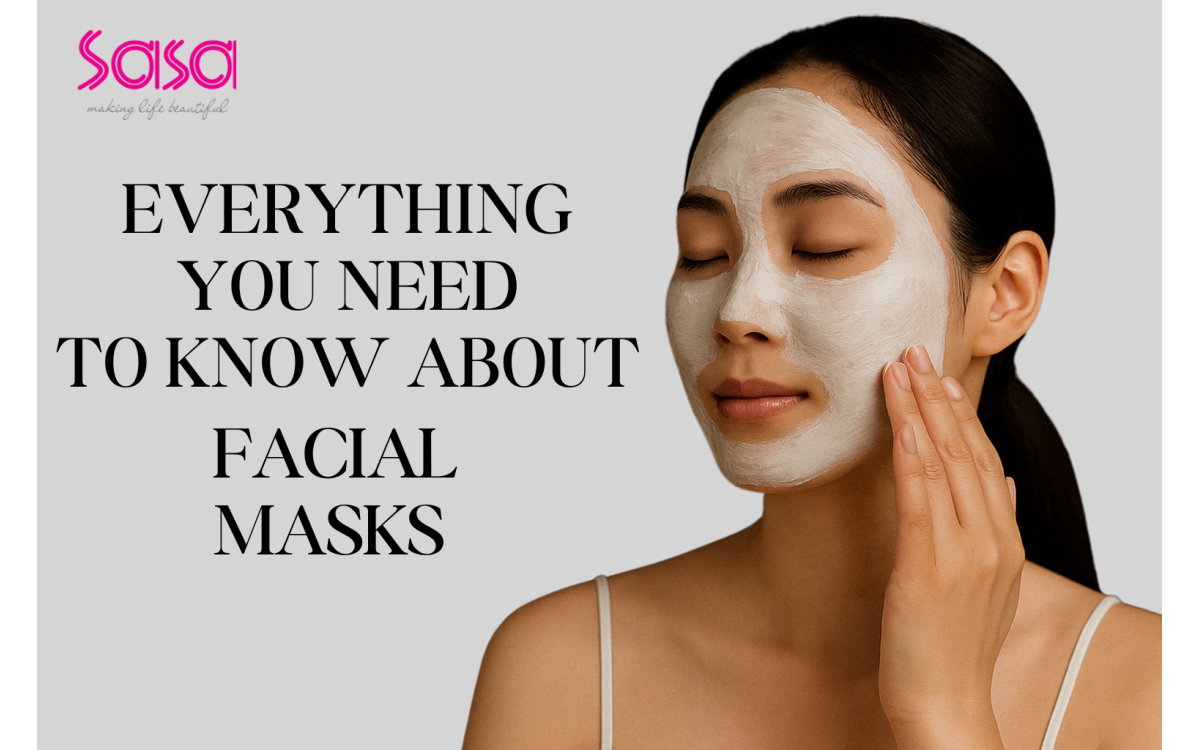
Choosing a Face Mask for Your Skin Type & Skincare Routine
21 Nov 2025

Best Sunscreen Brands for Singapore's Humid Weather
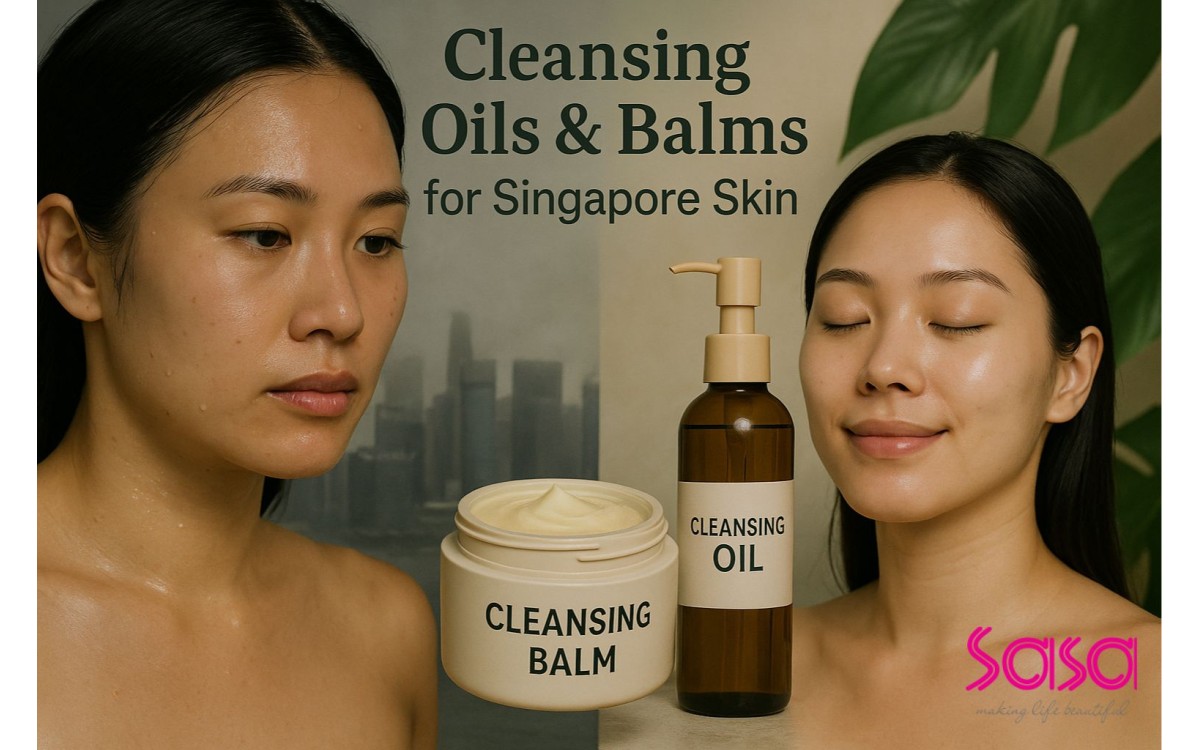
Best Cleansing Oils & Balms: Cleanse & Review the Top Choices



